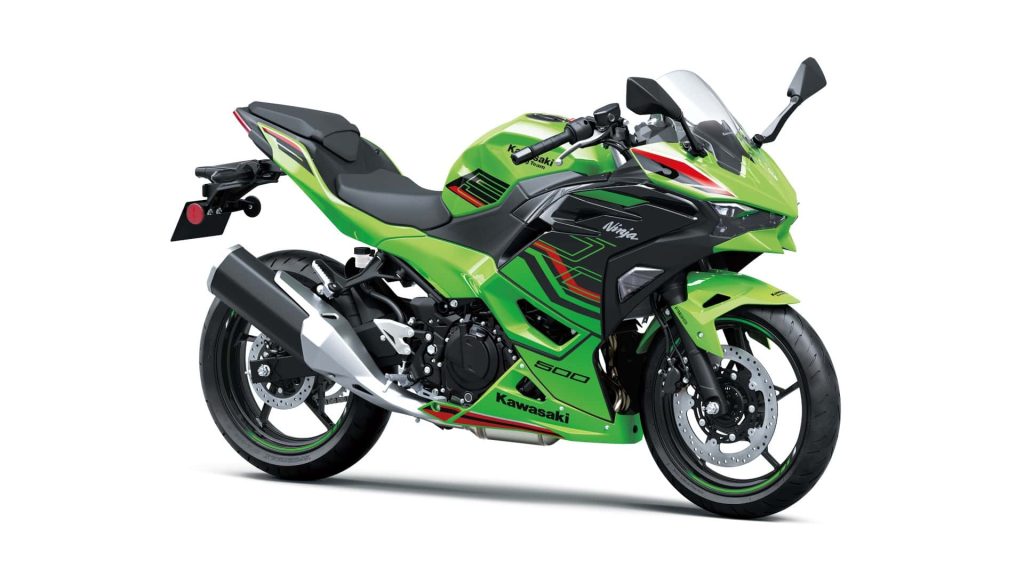Kawasaki unveiled its latest offerings, the Z500 and Ninja 500, at the annual EICMA show in Milan, Italy. Drawing heavily from the DNA of the existing Ninja 400 and Z400 models, both bikes feature a familiar steel trellis frame, suspension, and major components like the fuel tank. However, they showcase revamped styling elements, distinguishing them from their predecessors.
The Ninja 500, the fully-faired counterpart, boasts a distinctive new nose and headlight design compared to the older Ninja 400. Closer scrutiny reveals updates in the side panels, lower fairing section, and the seat unit. The Z500 shares a similar rear section with redesigned tank ducts and a more compact nose cowl featuring a smaller headlight unit than its predecessor, the Z400.
Unveiled alongside their significant rivals, Honda’s CB500 Hornet and CBR500R, both Kawasaki models incorporate color TFT instruments with smartphone connectivity and a USB-C power port.
While detailed specifications are yet to be released by Kawasaki, the fundamental dimensions are expected to align with the Ninja 400 and Z400. The increased engine capacity, achieved through a 58.6mm stroke (up from 51.8mm) while maintaining the previous 399cc engine’s 70mm bore, is likely to impact torque and low-end pull more than peak power.
In European markets, the “500” models are touted as A2-license compliant, adhering to a maximum power output of 48 hp and a restricted power-to-weight ratio (0.2kW per kilogram or 0.122 hp per pound). Given that the existing Ninja 400 and Z400 are already on the power-to-weight limit, producing 45 hp and weighing 167kg and 165kg, respectively, the larger engine may not result in a significant horsepower increase. However, it’s worth noting that the Eliminator’s 451cc mill produces 5Nm more torque.
Comprehensive specifications and pricing details are yet to be disclosed by Kawasaki.

















